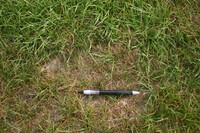By Amanda Folck
On April 21, the Turf Club was represented at the Ag Olympics competition. It was an event that had 12 other college fraternities, sororities, and organizations from CFAES competing for the top prize. Events included best uniforms, tug of war, backyard jenga, water balloon toss, etc. For their first appearance at the Ag Olympics in 28 years, the Turf Club came in 3rd place!

The Turf Club also sponsored the golf outing held at Homestead Springs Golf Course on April 23rd. During the event, over 28 sponsors and 24 teams participated at the outing. The total money raised at the outing was $4,500! The money raised will go toward the OSU Turf Club for expenses such as taking students to represent Ohio State in Turf Bowl competitions at GIS and STMA conferences in 2018. Thank you for those that came out for the golf outing. Continue reading →





